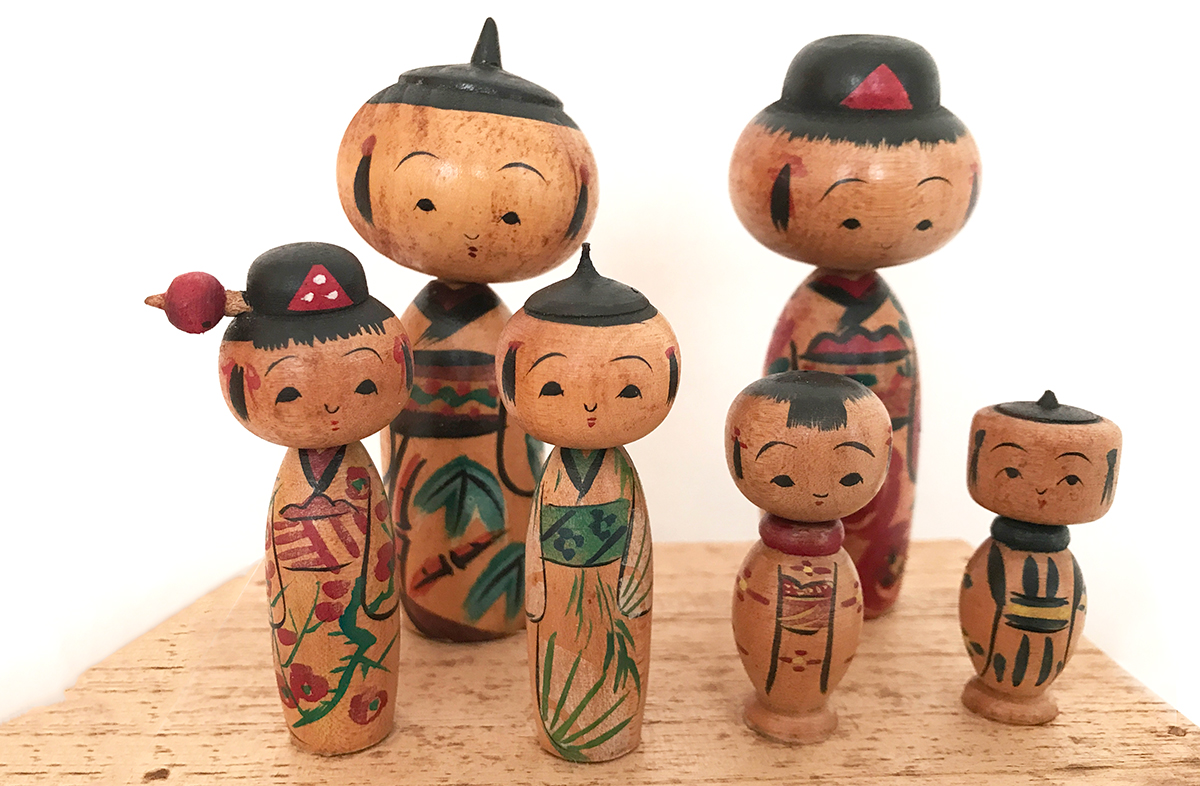Kokeshi doll’s history

–These kokeshi dolls were made in Gunma prefecture around 1960-1970. The author is unknown. (H4cm〜H6cm)–
Born in the Edo period
Kokeshi dolls were born in the late Edo period (around 1800) in the deep mountainous hot spring areas of the Tohoku region.
The wooden dolls, which have no arms or legs, but a spherical head on a cylindrical body, were made by woodworking potter’s wheel craftsman who used Japanese woodworking wheels to make wood products.
There are several theories, but it is said that the wooden doll “Kokeshi” was widely produced as a souvenir for people who came to hot spring resorts to cure themselves, especially for children.
Many kokeshi dolls in Gunma
Gunma Prefecture is the largest producer of kokeshi dolls in Japan, producing more than 70% of the nation’s kokeshi dolls. In contrast to the traditional kokeshi dolls of Tohoku, the kokeshi dolls of Gunma Prefecture are creative kokeshi dolls called “modern kokeshi”.
Traditional kokeshis are characterized by specific shapes and patterns that are handed down from generation to generation, but the characteristics of Modern kokeshis are that they are not limited by shape, and new shapes and patterns are constantly being created.
Gunma’s Kokeshi dolls were first made in the spring of 1910, when a potter’s wheel factory was opened in Soja-machi by Senji Okina Sekiguchi. The main items handed down from Sekiguchi were wooden toys such as koma and kendama.
The abundant supply of wood in the prefecture and the early adoption of the rokuro technique were factors in the growth of this industry.
Unlike the so-called traditional kokeshi dolls, which have a spherical head and a stick-like body, the kokeshi dolls produced in Gunma came in a variety of shapes. Against this backdrop, Gunma’s kokeshi dolls were introduced to the world in earnest around 1948, soon after the end of World War II. The popularity of the kokeshi boomed and spread throughout Japan.
こけしの歴史
こけしは、江戸時代後期、東北地方の温泉地のお土産として作られたのが発祥といわれています。 山で木材を挽き、椀や盆を制作していた木地師(きじし)たちが、湯治場で販売する子ども向けのお土産品として作り始めたことがこけし誕生の有力な説です。
群馬のこけしは、1910年春、前橋市の総社町に元祖関口専司翁(せきぐちせんじおきな)の手によって、ロクロ工場が開業されたのが始まりです。その後、群馬のこけしは全国の観光地などで売られるようになり、「創作こけし」や「近代こけし」と呼ばれるようになりました。
伝統こけしは様式に従って制作されますが、新型こけしは自由な発想によって制作することができます。そのため、伝統こけしには見られないような様々なタイプのこけしがあります。
